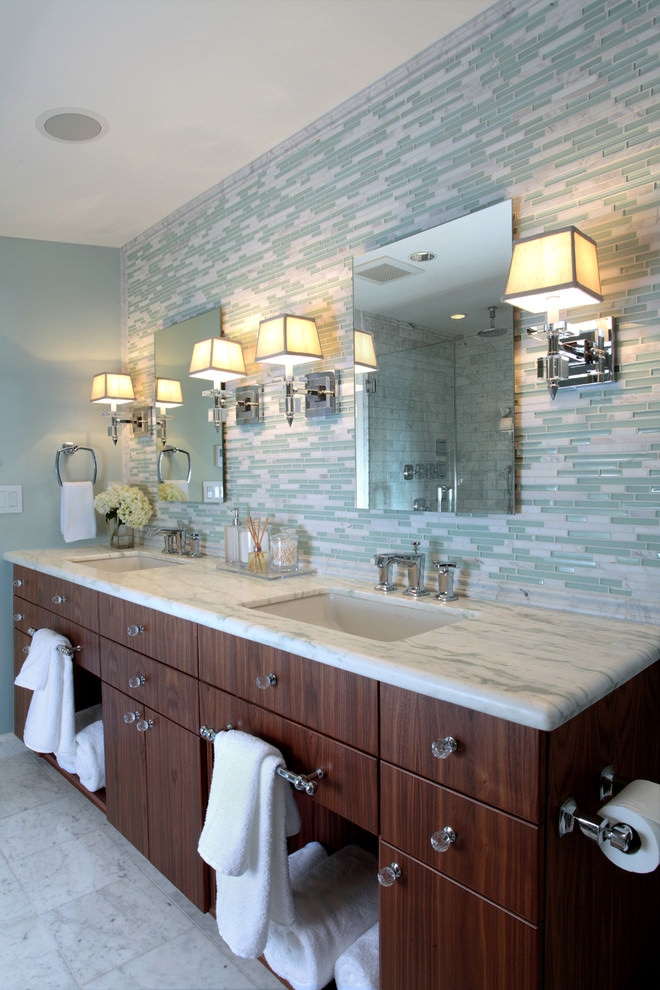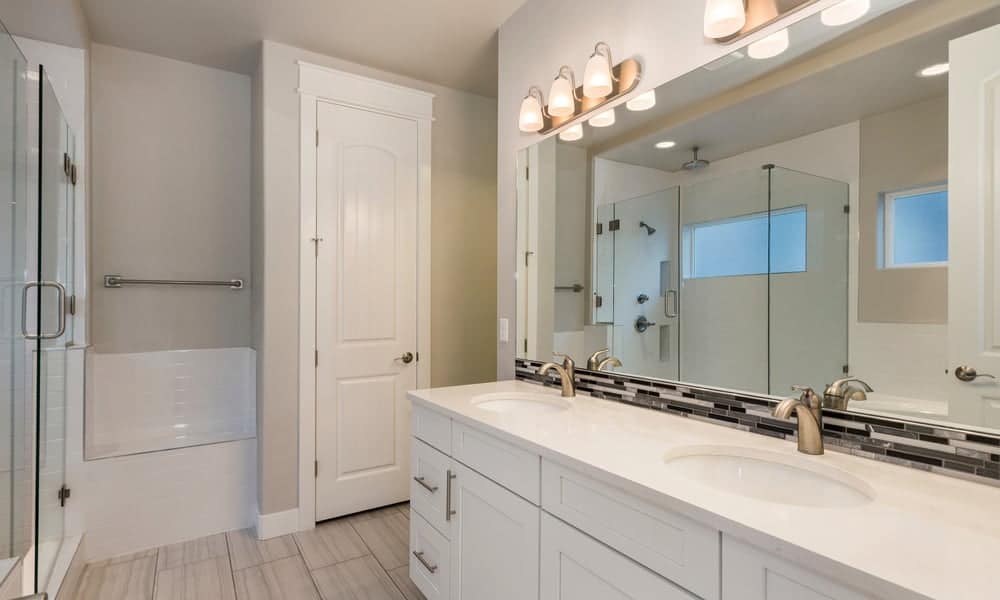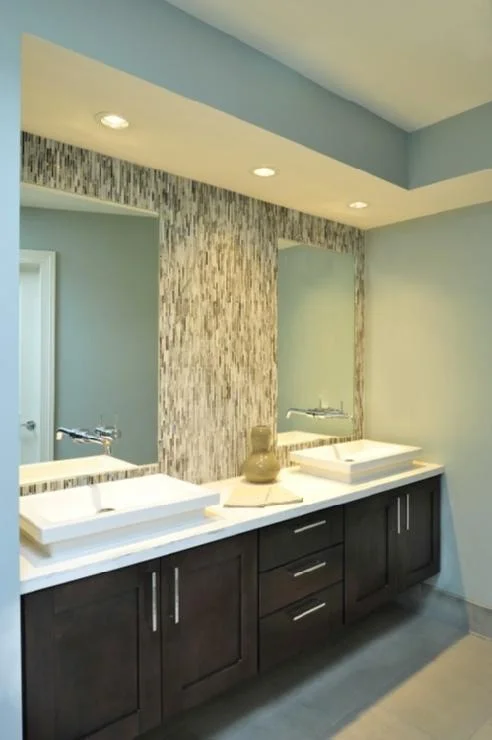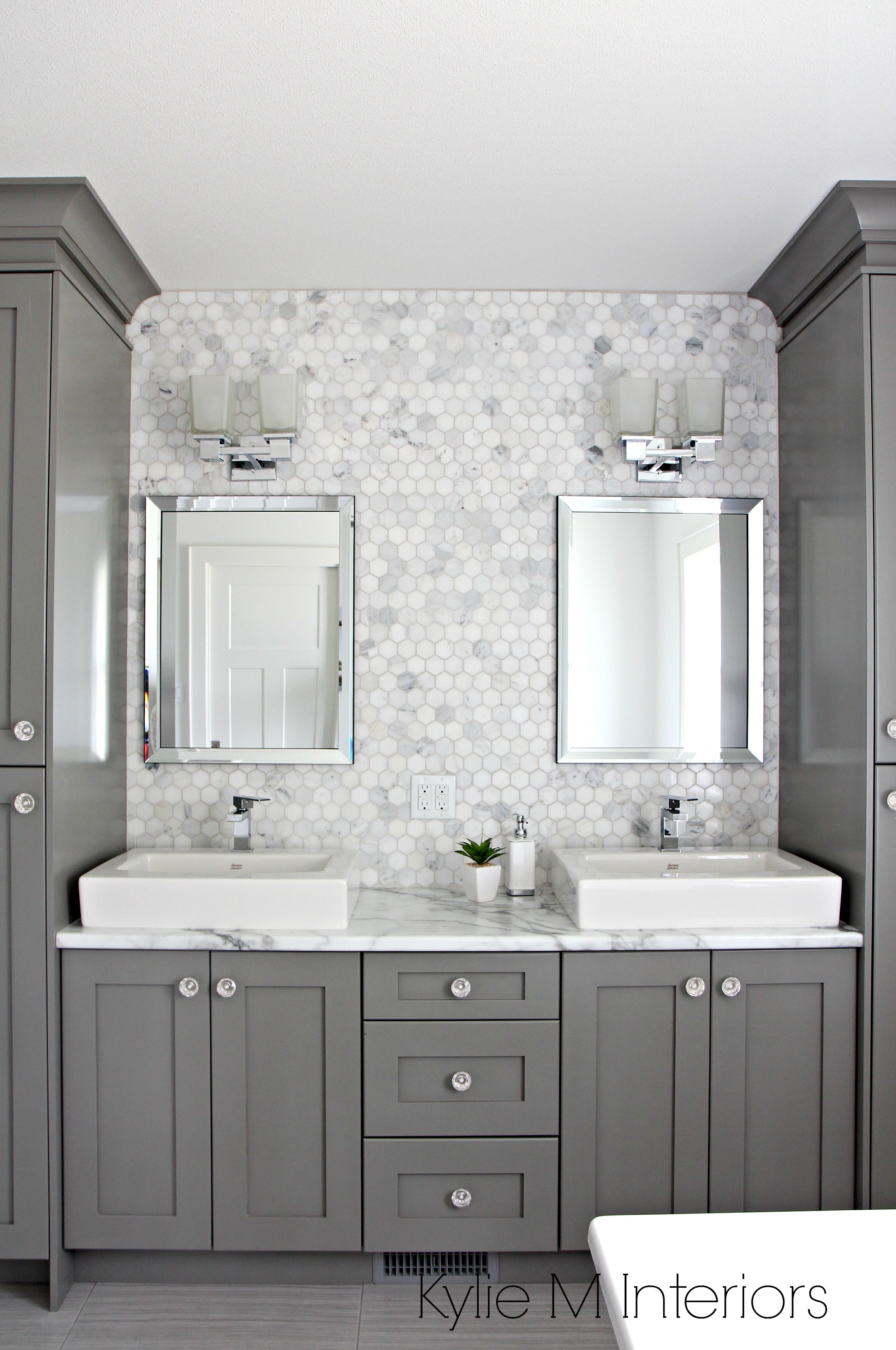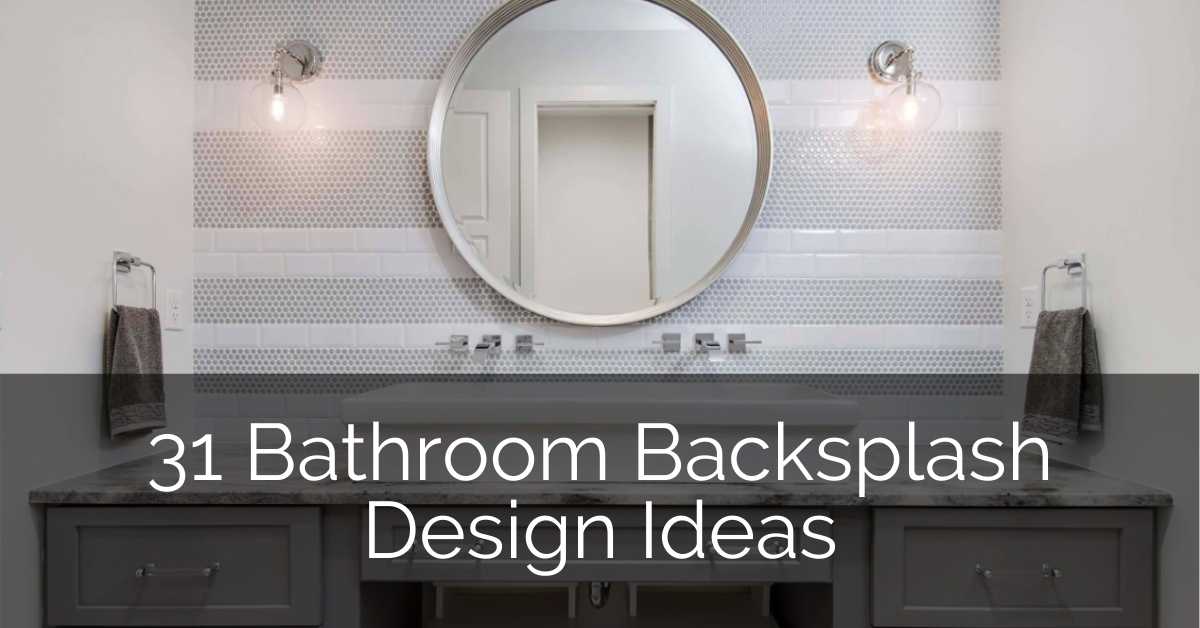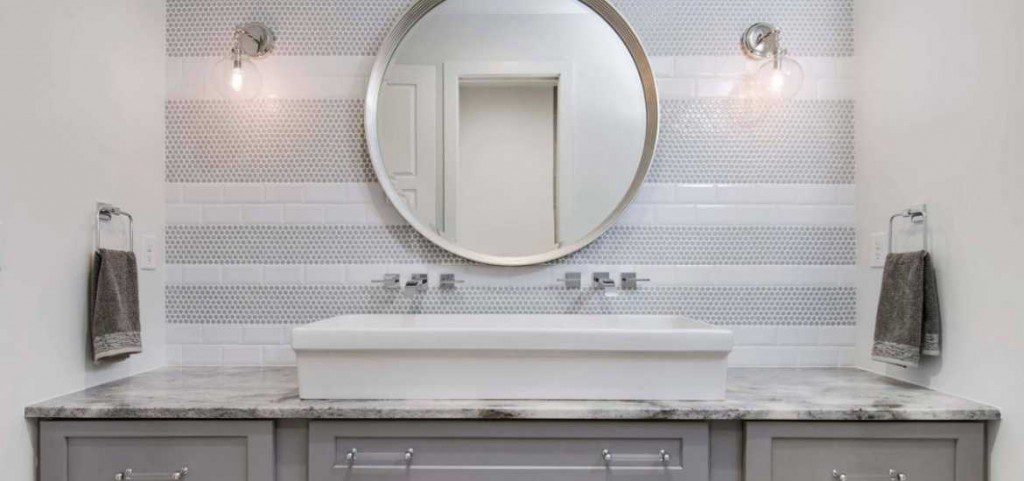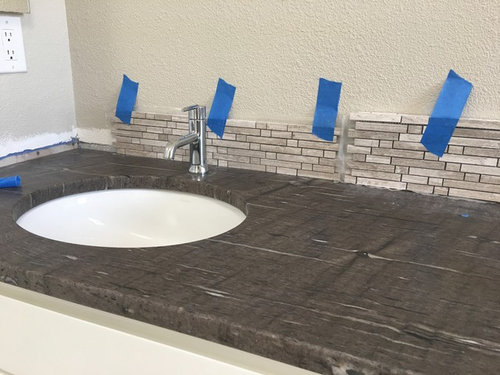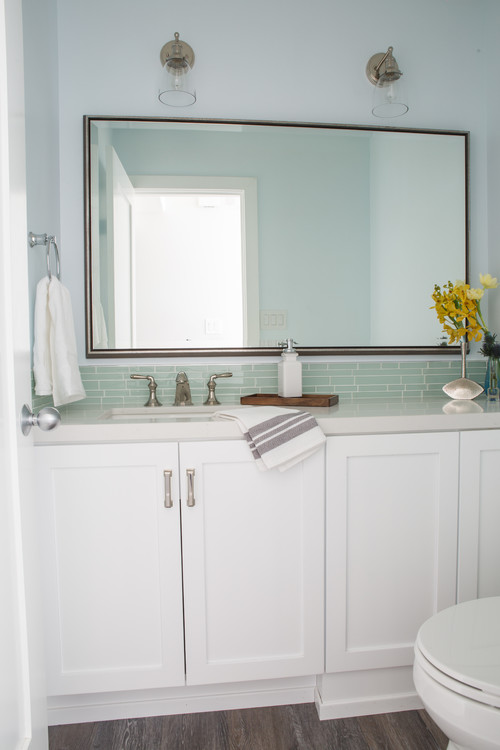When it comes to adding a touch of style and functionality to your bathroom, a tile backsplash behind the vanity can make a significant difference. A bathroom vanity tile backsplash not only adds aesthetic appeal but also serves a practical purpose by protecting the wall from water damage and stains. There are numerous options available when it comes to selecting tiles for your backsplash, including ceramic, porcelain, glass, and natural stone, each offering unique characteristics and design possibilities.
One of the primary considerations when choosing tiles for a bathroom vanity backsplash is durability. Since bathrooms are prone to moisture and humidity, it’s essential to select tiles that are water-resistant and easy to clean. Porcelain and ceramic tiles are popular choices for bathroom backsplashes due to their durability and low maintenance requirements. These tiles are available in a wide range of colors, patterns, and finishes, allowing you to customize the look of your vanity area to suit your taste and style preferences.
Another factor to consider when selecting tiles for a bathroom vanity backsplash is size and layout. Larger tiles can create a seamless look with fewer grout lines, while smaller tiles offer more intricate design possibilities. Additionally, the layout of the tiles, whether they are arranged in a traditional grid pattern or a more modern herringbone or subway layout, can impact the overall aesthetic of the space.
In addition to size and layout, the color and texture of the tiles can also play a significant role in the design of your bathroom vanity backsplash. Light-colored tiles can help make a small bathroom feel more spacious and airy, while darker tiles can add drama and sophistication to the space. Textured tiles, such as subway tiles with a beveled edge or mosaic tiles with a matte finish, can add visual interest and dimension to the backsplash.
Proper installation is crucial for ensuring the longevity and effectiveness of a bathroom vanity tile backsplash. It’s essential to hire a professional installer who has experience working with bathroom tiles and understands the unique challenges of the space. Proper preparation of the wall surface, including waterproofing and leveling, is essential for preventing water damage and ensuring a secure installation.
Once installed, regular maintenance is key to keeping your bathroom vanity tile backsplash looking its best. Routine cleaning with a mild detergent and warm water can help remove dirt, grime, and soap scum, while periodic resealing of natural stone tiles can help protect them from stains and moisture damage. By selecting the right tiles, planning a thoughtful layout, and ensuring proper installation and maintenance, you can create a stunning and functional bathroom vanity backsplash that enhances the beauty and value of your home.
Bathroom Backsplash Ideas – Tile, Sink & Vanity Backsplash
Backsplash Advice For Your Bathroom – Would you tile the side
Our Favorite Bathroom Backsplash Ideas for Every Style and Budget
Bathroom Backsplash Ideas – Sebring Design Build
Bathroom with floating vanity and glass tile backsplash Glass
Bathroom Backsplash Ideas – Sebring Design Build
How To Install Backsplash Bathroom Tile Easy Simple – YouTube
Brilliant Bathroom Backsplash Ideas Family Handyman
Requesting Advice for Bathroom Vanity Backsplash Height
Unique Bathroom Vanity Backsplash Ideas Glass, Stone, Ceramic Tile
ARIEL Bathroom Vanity 73″ Inch Double Rectangle Sinks
Related articles:
- Kohler Bathroom Vanity Tops
- Wyndham Bathroom Vanity
- 30 Single Bathroom Vanity Set By Legion Furniture
- Bathroom Vanity Under Window
- Bathroom Vanity Display For Sale
- Queen Anne Bathroom Vanity
- Gumtree Bathroom Vanity
- Bathroom Vanity 70
- Bathroom Vanity Glass Shades
- Bathroom Vanity Restoration Hardware Sale
Bathroom Vanity Tile Backsplash
When it comes to designing or renovating your bathroom, the vanity area is one of the most important areas to consider. Not only does it serve as a functional space for daily grooming and hygiene routines, but it can also be a stylish focal point that adds character and personality to your bathroom’s overall design. One way to enhance the look of your vanity area is by adding a tile backsplash. In this article, we will explore the benefits of a bathroom vanity tile backsplash, how to choose the right tiles, installation tips, and frequently asked questions.
Benefits of a Bathroom Vanity Tile Backsplash
A bathroom vanity tile backsplash is a practical and stylish addition that offers various benefits. Firstly, it protects your wall from moisture damage caused by water splashes or steam from the shower. Secondly, it adds an aesthetic appeal that enhances your bathroom’s overall style. A tile backsplash can create a focal point that draws attention to your vanity area and adds character and personality to your bathroom. Moreover, tiles are durable and easy to clean, making them an ideal material for high-moisture environments such as bathrooms.
Choosing the Right Tiles for Your Bathroom Vanity Backsplash
When choosing tiles for your bathroom vanity backsplash, there are several factors to consider:
Material: Tiles come in different materials such as ceramic, porcelain, glass, natural stone, and metal. Each material has its unique properties in terms of durability, porosity, texture, and color variations. Consider your budget, style preference, and maintenance requirements when choosing the right material for your tiles.
Color: The color of your tiles should complement or contrast with your vanity countertop and wall colors. Light-colored tiles can make small bathrooms appear larger while darker tiles add drama and depth to large bathrooms.
Size: Tiles come in various sizes from small mosaics to large-format tiles. The size of your tiles should be proportional to the size of your vanity area and wall space. Large-format tiles create a seamless look with fewer grout lines, while smaller tiles add texture and interest.
Style: Tiles come in various styles such as subway, mosaic, hexagon, herringbone, and more. Choose a style that complements your bathroom’s overall design scheme.
Installation Tips for Your Bathroom Vanity Tile Backsplash
Installing a tile backsplash requires some DIY skills and tools. Here are some installation tips to consider:
Prepare the surface: Clean and prime the wall surface before installing the tiles to ensure proper adhesion. Use a level to mark a straight line where the bottom row of tiles will sit.
Measure and cut: Measure the width and height of your vanity area and transfer those measurements onto your tiles using a marker or chalk. Use a wet saw or tile cutter to cut the tiles to size.
Lay out the tiles: Dry-fit your tiles before applying adhesive to ensure that they fit correctly and are evenly spaced. Make any necessary adjustments before starting the installation.
Apply adhesive: Apply thin-set adhesive onto the wall surface using a notched trowel, starting at the centerline and working your way outwards.
Install the tiles: Press each tile firmly into place, using spacers to maintain consistent spacing between each tile. Use a level to ensure that each tile is straight and level.
Grout: Once the adhesive has dried, remove the spacers and fill in the gaps between each tile with grout using a float or scraper. Wipe away any excess grout with a damp sponge.
How much does it cost to install a bathroom vanity tile backsplash?
The cost of installing a bathroom vanity tile backsplash varies depending on several factors such as the size of your vanity area, the type of tiles you choose, and whether you hire a professional or DIY. On average, expect to spend between $300 to $600 for materials and installation.
Can I install a tile backsplash over existing tiles?
Yes, you can install a tile backsplash over existing tiles as long as they are in good condition and firmly adhered to the wall. However, it’s essential to clean and prime the surface before applying new tiles.
How do I clean my bathroom vanity tile backsplash?
To clean your bathroom vanity tile backsplash, use a mild detergent and warm water solution. Avoid using abrasive cleaners or tools that could scratch or damage the tiles. You can also use a grout cleaner to remove any dirt or stains from the grout lines. Regular cleaning and maintenance can help prolong the lifespan of your tile backsplash.
How do I prevent mold and mildew from forming on my bathroom vanity tile backsplash?
To prevent mold and mildew from forming on your bathroom vanity tile backsplash, make sure to keep the area dry and well-ventilated. Wipe down the tiles regularly with a dry cloth or towel after use, especially in humid environments. You can also use mold and mildew-resistant grout to help prevent growth in the grout lines.
Can I customize my bathroom vanity tile backsplash?
Yes, you can customize your bathroom vanity tile backsplash by mixing and matching different types of tiles, colors, and patterns to create a unique look that reflects your style. You can also add decorative accents such as mosaic tiles or border tiles to create a focal point or add visual interest.
A bathroom vanity tile backsplash is a practical and stylish addition to any bathroom. With careful consideration of factors such as material, color, size, and style, you can create a beautiful and functional design that complements your overall bathroom decor. By following proper installation and maintenance tips, you can enjoy your tile backsplash for years to come.
